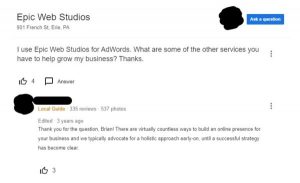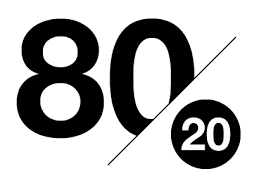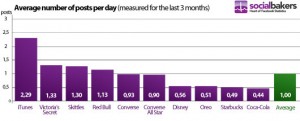
Ask any marketer if conversion rate optimization (CRO) matters to him or her, and you’ll most likely get a “Well, duh” in response. Essentially, the conversion rate is the percentage of visitors that follow through and take action (like clicking a CTA button to join an e-newsletter, filling in a form, purchasing a product, etc.)
And because conversion rate often directly correlates with ROI, it’s one of the key metrics marketers study when evaluating how their company or organization’s website or landing page is performing.
The problem is that there are some common myths about CRO floating around that are sending those marketers down the wrong paths – and they wind up deploying strategies that fall flat. To remedy this, let’s look at the top five myths about CRO, as well as their realities.
1. You can copy/replicate any successful website’s conversion rate strategy and get the same impact
There are countless case studies and A/B tests out there you can study and learn from, but replicating them for your own use doesn’t mean you’re guaranteed to get the same results. A tactic that produces a 25% boost in conversions for one company might not be quite so effective when you implement it on your site.
So why can’t you just deploy a red CTA button you’ve seen produce impressive conversion rates in case studies for other businesses? Because your audience is unique and has it’s own set of needs, pain points, and obstacles to overcome.
With this in mind, it’s important to remember that while CRO studies and research can be insightful and help spark ideas for your own tests – they’re only a starting place. It’s not until you test and tweak different design elements or copy that you’ll know for sure what will actually improve your conversion rate.
2. The results of your CRO tweaks will be dramatic
Not every strategy for conversion rate optimization is going to produce dramatic, fantastic results. And guess what? That’s okay, because sometimes a small boost is better than no boost at all.
Some sites promoting their CRO services perpetuate this common myth – that conversion rate optimization tactics will consistently produce dramatic boosts within the 20-75%+ range. But in reality, conversion rates that fall even below the 20% mark are usually worth celebrating.
Think about it like this: Say you achieve a 1% increase in your conversion rate on a landing page, and that page has 5,000 page visitors per month. That means 50 more conversions than you were getting before…and if your average conversion value is $ 20, that’s an extra $ 1000 in revenue. Not so bad, right?
If you’re not consistently getting stellar, dramatic conversion rates – don’t sweat it. Small wins are wins nonetheless.
3. A/B testing is the only strategy that matters in conversion rate optimization
While split testing is one of the main ways conversion experts evaluate success for different tactics, it isn’t the only tool for gauging success. After all, if you only focused on A/B test results and ignored the impact your design and copy changes had on other metrics (like sales, registrations, unsubscribe rates, etc.), you’d have a big problem on your hands.
The truth of the matter is that A/B tests are only part of the equation that marketers should study when evaluating the success of CRO efforts. Using the data from these very specific tests, they can learn more about the audience and demographic’s needs – and can then use this information in various other aspects of marketing.
For example: When the watch brand Seiko used an A/B test to promote price vs. authenticity of their watches, they learned that customers valued the non-counterfeit messaging much more than the low price. The version with the authorized dealer site image boosted conversions by 107%. With this data, Seiko’s marketers can incorporate this authenticity angle into other marketing materials – like emails, landing pages, etc., for more relevant messaging with their customers.


4. What works for conversion rate optimization today will work for years to come
One of the easy mistakes to make when pursuing CRO is to stop after positive results are achieved. The myth here is that once you’ve found a tactic that’s effective, you can set it and forget it – and it’ll continue to drive conversions indefinitely.
The truth: Just because you’ve achieved a great conversion rate at one point in time, there’s no guarantee it’ll work forever. There are many variables that can impact your tests, and if you’re not studying CRO on an on-going basis, you could be aggravating your loyal customers.
Consider this: What if you had a large influx of website traffic from a specific referral source during the time of your test that brought in a demographic that’s different from your regular website visitors? Your test results could have been drastically skewed.
The lesson here: Don’t let one-time wins inform long-term decisions. Monitor your conversion rates continuously to keep a pulse on what’s happening on your website.
5. CRO strategies are a cure-all for low conversion rates
While taking steps toward boosting your conversion rate is an important part of the process when answering the question, “Why are my conversion rates lower than I’d like?” they simply can’t fix everything for you. Sure, design and copy tweaks can help improve parts of a larger process, but there are other questions at stake that need to be considered as well.
Ask yourself:
- Is the overall user experience getting in the way of conversions?
- Are there holes in the conversion funnel that are leaking customers?
- Am I providing enough realistic, helpful support options for customers who need assistance?
- Am I marketing to the wrong audience?
You can supplement your CRO data with customer surveys, feedback from social media, interactive content data, customer support requests, and much more to get a realistic and complete view of the holes in your conversion funnel.
The major takeaway from these common myths: There’s more to CRO than meets the eye. It’s not a quick fix for low conversion rates–but it is part of a larger strategy that can transform your website performance.
Knowing the truth about what to expect when attempting to drive conversions, you’ll be more prepared to improve your website and landing pages and drive conversions through a holistic approach.
Digital & Social Articles on Business 2 Community
(71)










